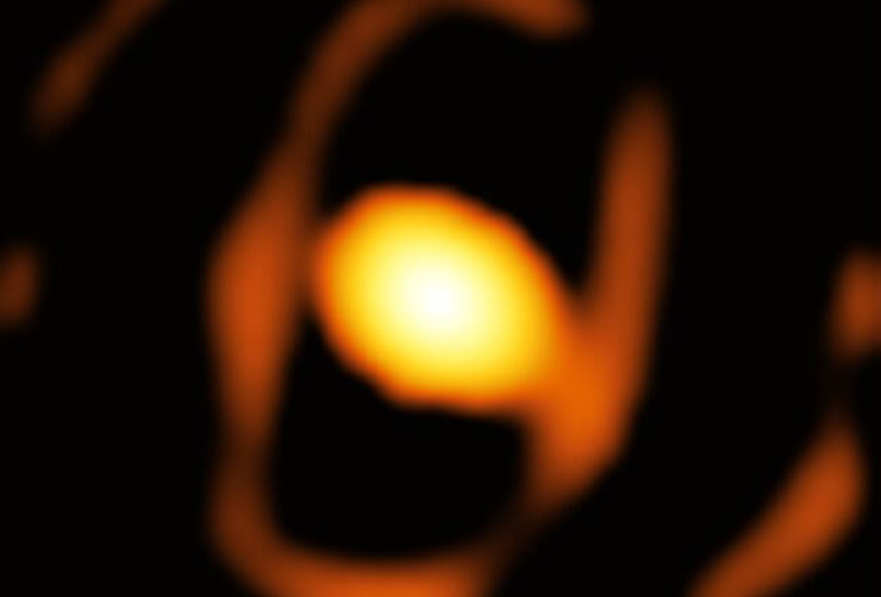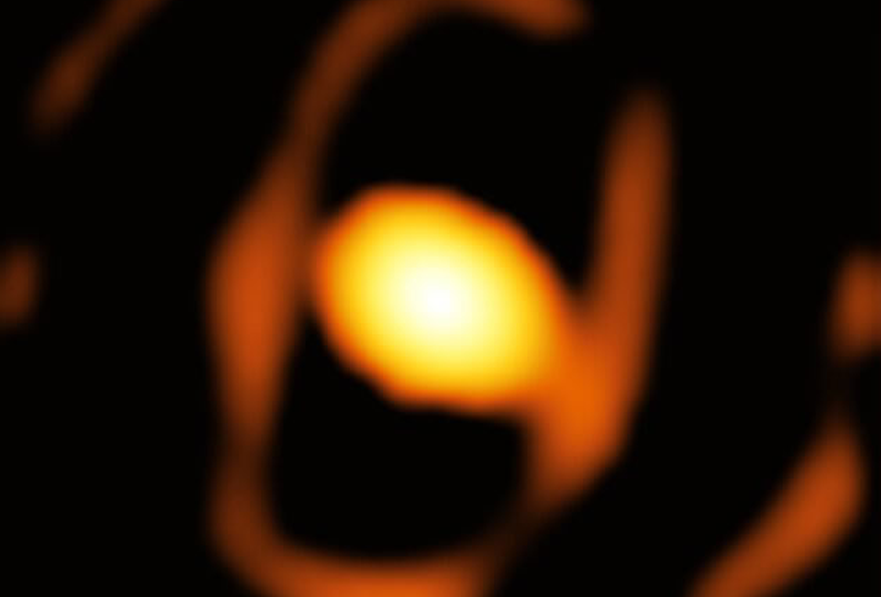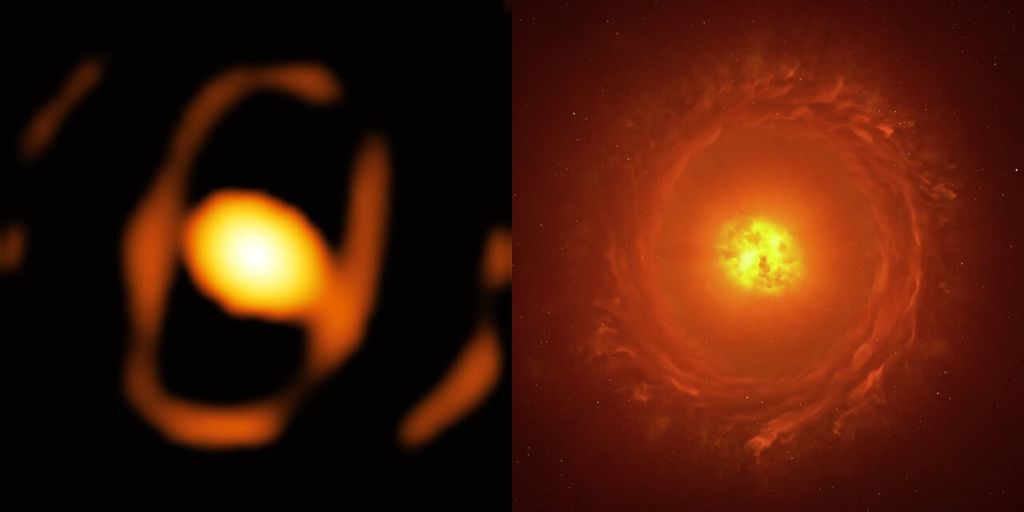Scientists take the first close-up image of a star outside the Milky Way



According to NASA in Spanish“For the first time, we have captured a close-up image of a dying star in a galaxy beyond our Milky Way.“he states Keiichi Ohnakaastrophysicist from Andres Bello University in Chile. Located in an impressive 160,000 light years awaystar VON G64 was photographed thanks to the impressive sharpness provided by Very Large Telescope Interferometer (ESO VLTI). New observations show star emitting gas and dustin the final stages before becoming supernova.
First image of star WOH G64 outside the Milky Way
“We discovered an egg-shaped shell that tightly surrounds the star” says Onaka, lead author of the study that brought these observations to light and published in the journal. Astronomy and astrophysics. “We’re excited because this may be due to the sudden release of material from a dying star before a supernova explosion.“.
Although the astronomical community has been able to obtain about two dozen magnified images of stars in our galaxy that reveal their properties, there are many other stars that inhabit other galaxies so distant that it is extremely difficult to observe even one of them in detail. Until now.

The recently photographed star WOH G64 is located in the Large Magellanic Cloud.one of the small galaxies orbiting the Milky Way. The astronomical community has known about this star for decades and named it “giant star“. Approximate dimensions WOH G64, 2,000 times larger than our Sun, is classified as a red supergiant..
Ohnaka’s team had been interested in this giant star for a long time. In 2005 and 2007, they used ESO’s VLTI, located in the Atacama Desert in Chile, to learn more about the star’s characteristics, and continued to study it in subsequent years. But It remained impossible to obtain a real image of the star..
To get the desired image, the team had to wait for one of the Second generation VLT devices, GRAVITY. Comparing their new results with other previous observations of WOH G64, they were surprised to find that the star has dimmed over the past decade.
“We discovered that the star has undergone significant changes over the past 10 years, giving us a unique opportunity to witness the star’s life in real time.“he states Gerd Weigeltprofessor of astronomy at the Max Planck Institute for Radio Astronomy in Bonn, Germany, and co-author of the study.
In their final stages of lifered supergiants such as WOH G64, They shed outer layers of gas and dust. in a process that can last thousands of years. “The star is one of the most extreme of its kind, and any drastic change could hasten its explosive end.“adds co-author Jacco van LoonDirector of the Kiel Observatory, University of Keele (UK), observing WOH G64 since the 1990s.
The team believes that these materials launched by the star could also be responsible for the darkening and unexpected shape of the dust shell surrounding the star.. The new image shows that the shell is stretched, which surprised the scientific community, which had expected a different shape based on previous observations and computer models. The team believes the egg-shaped shell could be explained by the loss of material from the star or the influence of an as-yet undiscovered companion star.
As a star gets fainter, getting close-up images of it becomes increasingly difficult, even for VLTI. However, planned upgrades to the telescope’s instruments, such as future GRAVITY+They promise to change this soon. “Similar follow-up observations using ESO’s instruments are needed to understand what’s happening on the star.“Onaka concludes.
